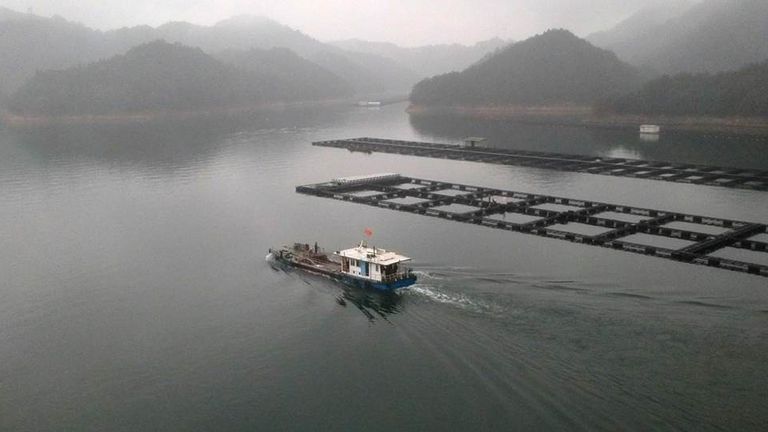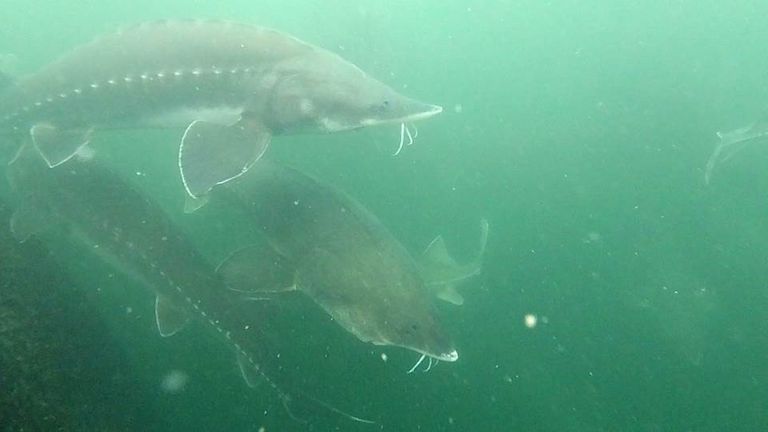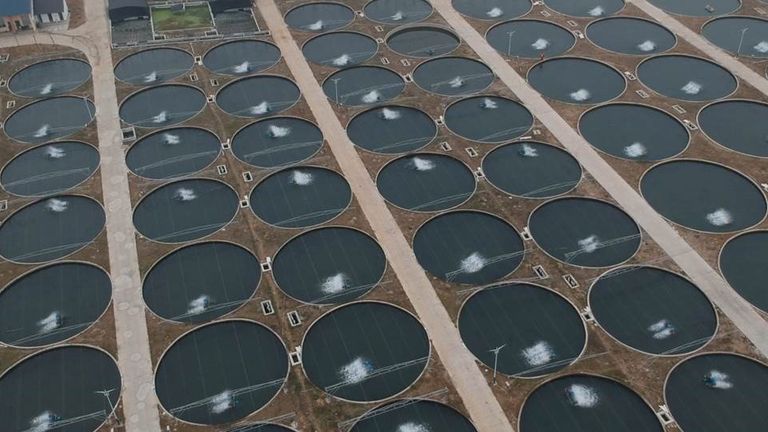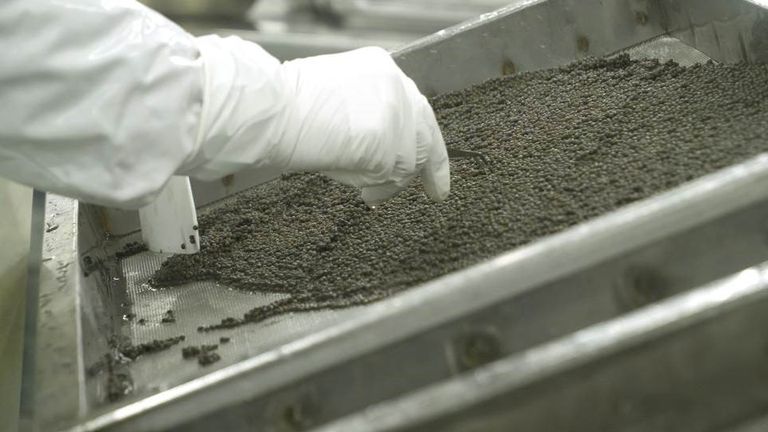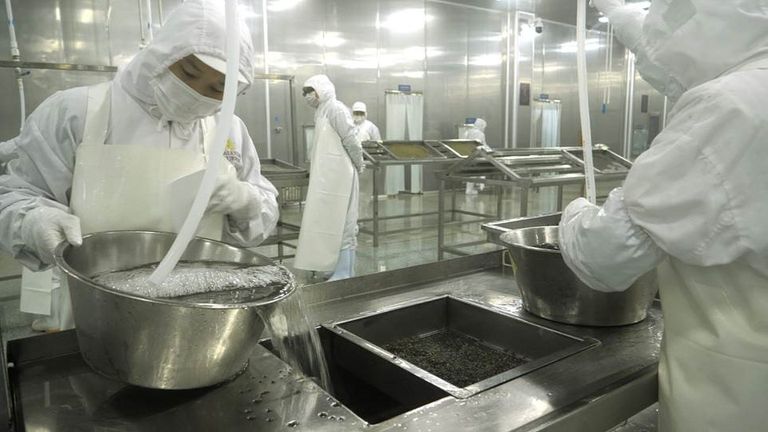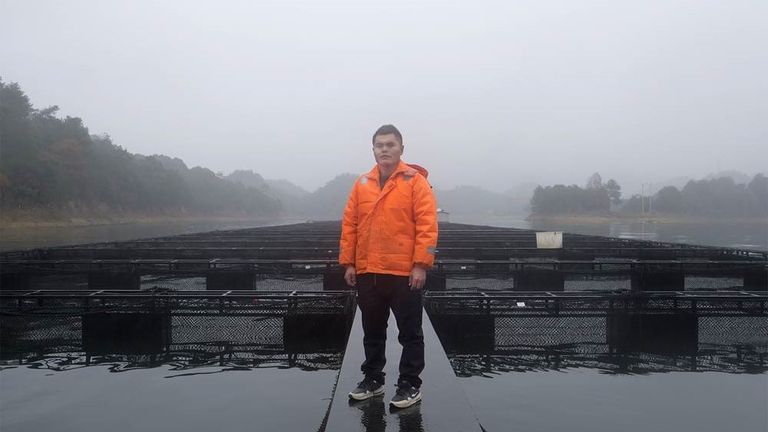
[ad_1]
Caviar was the traditional delicacy of the Caspian Sea, but production today has a new headquarters: China.
Qiandao Lake (Thousand Island) is located 220 miles south of Shanghai. Bordered by mountains, it’s a popular vacation spot for Chinese residents fleeing the city’s summer heat.
But it’s also home to Kaluga Queen, the world’s largest caviar maker, responsible for a third of global production.
Their caviar ends up everywhere. The company claims their eggs graced the tables of Queen Elizabeth and Kim Jong Un.
Kaluga Queen plans to go public next year at a valuation of around £ 600million, the company told Sky News.
“At first, people were surprised because: caviar, from China?” Han Lei, deputy general manager of Kaluga Queen, said.
“They have never heard of Chinese caviar. They had a lot of doubts about the quality. On security.
“Today, we supply 25 countries and we work with around 100 distributors around the world.”
The company was established by officials from the Chinese Ministry of Agriculture, who started building their first farm in 2003.
It was good timing. In 2005, the United States banned imports of beluga caviar from sturgeon caught in the Caspian Sea, fearing that overfishing could destroy the species.
Farmed caviar is not subject to these restrictions.
“In 2006, we produced the first tins of Chinese farmed caviar,” Mr. Han said. “And after that, we grew every year.”
In a corner of Qiandao waters, floating metal and net structures are home to more than 1,000 sturgeons.
Some are up to two meters long and worth as much as a Ferrari, Han said, because of the value of the eggs they carry.
Different breeds of sturgeon spend around four years in the lake before being transported to terrestrial pools.
“We feed them and watch them grow from baby fish to adult fish,” Deny Yun, who manages the farm, told Sky News.
“We are heartbroken sending them to the factory. But as a business, we have to do it. We have to suffer this.
Once mature – at least eight years old but for some breeds as old as 15 years old – the sturgeons are taken to the processing plant.
They are opened while still alive and the eggs are extracted before the sturgeon is killed and the rest of its body used for meat.
The eggs are cleaned, sorted, and salted before being canned – a process that takes 15 minutes from start to finish.
Most of Kaluga Queen’s caviar is sold under different brands overseas – in the UK it is sold by King’s Fine Food, which is on sale at Fortnum and Mason’s and Harrods.
But it also supplies customers in China using its own brand. And China has an appetite for this product.
Prices start at RMB 500 (around £ 57) for 50g, going all the way up to RMB 9,000 (£ 1,024) for a 50g can of beluga caviar.
“We have been doing a lot of promotion to introduce the culture of caviar to the Chinese,” Han said.
“Today, more and more people are starting to consume caviar, to like caviar, to be caviar fans.
“The internal market is developing very quickly. Once the virus is well controlled by the government, they go to restaurants more.
“And more and more people like to enjoy caviar.”
This is helping to close the international order gap in the wake of COVID-19.
Kaluga has produced 20% less caviar this year, although it aims to fill that gap in 2021.
And there is a lot of room for growth. Current world production of caviar, from all producers, is around 300 tonnes.
During the heyday of the 1980s, which displayed free spending status, production peaked at 1,000 tonnes.
Mr. Han said Kaluga Queen wanted “normal people to have the chance to try caviar”.
“This way we can meet the demand around the world,” he added.
Source link
